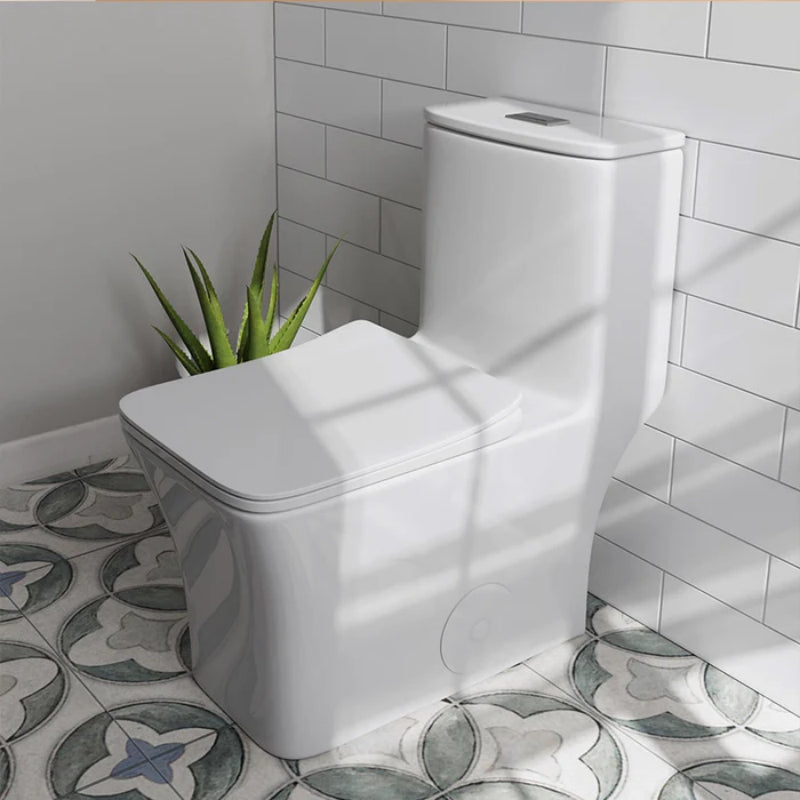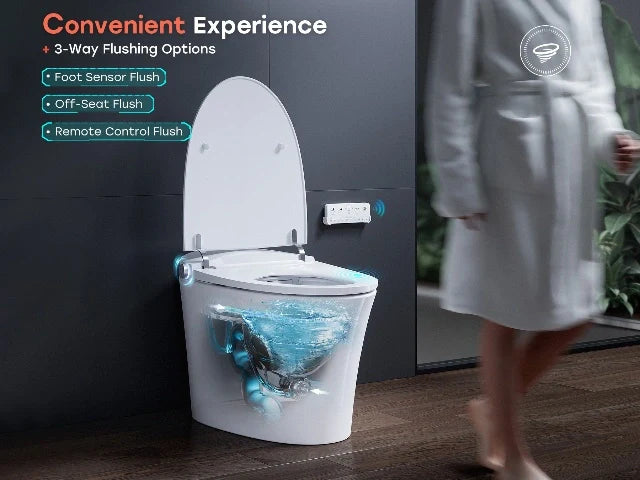
Water-saving toilets are designed to consume less water than the traditional ones. Usually, they have advanced flushing mechanisms that can effectively remove waste while significantly minimizing water usage. These water-efficient toilets are popular, as they can not only save water resources but also save a household’s spending on water bills.
Comparison between Water-saving and Conventional Toilets
+ Water Usage per Flush
The most significant difference between water-saving and conventional toilets is the water usage per flush. Conventional toilets can use 1.6 gallons (6 liters) per flush, and the older versions can use up to 7 gallons. But the water-saving toilets, according to the WaterSense standard, can use 1.28 gallons (4.8 liters) or less per flush.
+ Annual Water Usage
With less water used per flush, the annual water usage of water-efficient toilets is considerably lower. For a family of four, this can translate to thousands of gallons saved annually.
+ Flushing Mechanism
Conventional toilets typically use a siphonic or a washdown system. Meanwhile, water-efficient toilets utilize more efficient flushing mechanisms, such as the dual-flush system, the pressure-assisted system, or the vacuum-assisted system.
+ Maintenance
Maintenance for water-saving toilets is similar to that of conventional toilets. The lower water volume and special flushing mechanisms, like pressure-assisted flushing, may lead to additional concerns. Proper use and regular maintenance can mitigate the issue.
+ Cost Savings
Water-efficient toilets can have a higher price than traditional alternatives. However, the water savings can be translated into cost savings on water bills. Over time, water-saving toilets can prove their significant value.
+ Environmental Impact
By conserving water, water-saving toilets have a positive environmental impact. They help reduce the strain on water resources and contribute to sustainability efforts, which traditional options may fail to do.
Which Toilet Saves the Most Water?
Among different types of water-saving toilets, their working mechanisms can differ depending on the unique design and technology utilized. Some of them are:
Dual-flush Toilets
These flush toilets feature two flush options. One is the full flush mode for solid waste, while the other is the partial flush mode for liquid waste.
Pressure-assisted Toilets
These use a sealed tank that pressurizes the water, which helps in using less water per flush due to the force created by the pressure.
Vacuum-assisted Toilets
Similar to pressure-assisted toilets, vacuum-assisted toilets use negative pressure to help move waste through the pipes with less water.
Usually, dual-flush toilets are considered to save the most water. However, the details can vary due to the different technologies utilized. If you would like to adopt water-efficient toilets in your home, check the water consumption on the product labeling or user manuals.
HOROW Water-saving Toilet Recommendations
All HOROW toilets are water-efficient toilets. Some of our best low-flow toilets are as follows:

T0413W
HOROW T0413W is a one-piece elongated toilet. It utilizes an energy-efficient double-flush siphon system to offer either 0.8 or 1.28 gallons per flush (GPF).

T16
HOROW T16 is a tankless toilet integrated with a bidet function. It is equipped with an advanced pre-wetting system and a dual-flush mechanism to flush away the waste effectively.

T0334W
HOROW T0334W is a modern dual-flush elongated toilet. Additionally, this toilet is crafted with a full ceramic glaze, which prevents clogging for a hassle-free experience over time.

T0350W
HOROW T0350W is a one-piece toilet with an ADA-compliant height. The combination of MAP (Maximum Performance with Aspiration) 1000g and siphon flushing guarantees efficient waste removal.

T05
HOROW T05 is another one-piece toilet with bidet functionality. There are 4 different flushing options: automatic, foot touch, remote, and manual control.

T37
HOROW T37 is a smart toilet with a bidet function, designed for a 10-inch rough-in installation. You can find auto flushing, heated seats, and more on it.
T0413W
HOROW T0413W is a one-piece elongated toilet. It utilizes an energy-efficient double-flush siphon system to offer either 0.8 or 1.28 gallons per flush (GPF).
T16
HOROW T16 is a tankless toilet integrated with a bidet function. It is equipped with an advanced pre-wetting system and a dual-flush mechanism to flush away the waste effectively.
T0334W
HOROW T0334W is a modern dual-flush elongated toilet. Additionally, this toilet is crafted with a full ceramic glaze, which prevents clogging for a hassle-free experience over time.
T0350W
HOROW T0350W is a one-piece toilet with an ADA-compliant height. The combination of MAP (Maximum Performance with Aspiration) 1000g and siphon flushing guarantees efficient waste removal.
T05
HOROW T05 is another one-piece toilet with bidet functionality. There are 4 different flushing options: automatic, foot touch, remote, and manual control.
T37
HOROW T37 is a smart toilet with a bidet function, designed for a 10-inch rough-in installation. You can find auto flushing, heated seats, and more on it.






FAQs about Water-saving Toilets
Do water-saving toilets clog easily?
The answer will be no if they are designed and installed correctly. Modern water-saving toilets often feature larger and smoother trapways and powerful flush systems to ensure that waste is cleared effectively. However, the potential for clogging can depend on the user's habits, such as not flushing excessive amounts of toilet paper or non-flushable items.
Which toilet is better, single flush or dual flush?
The choice really depends on user preference and specific needs. The dual flush toilets, as illustrated before, allow users to use the necessary amount of water for each type of waste. Single-flush toilets, on the other hand, use the same amount of water for each flush. If you prioritize water conservation, a dual-flush toilet is generally considered better.
How much is a water-saving toilet?
Overall, the basic model can cost a few hundred dollars, while more advanced options can cost a thousand dollars or more. But the ultimate price can depend on multiple factors, like the brand, features, and technology used. Take long-term benefits into account. You can check the Water Efficiency Rating (WER) or similar standards. See if your investment is worth its value.
Related Articles

HOROW Smart Toilet with Built-In Bidet: The Ultimate Bathroom Upgrade
HOROW Smart Toilet with Built-In Bidet: The Ultimate Bathroom Upgrade Bathroom upgrades are no longer just about tiles and fixtures. Today, homeowners are looking for smarter, cleaner, and more com...

Is a HOROW Smart Toilet with Bidet Right for Your Home?
Is a HOROW Smart Toilet with Bidet Right for Your Home? Smart home upgrades are becoming increasingly popular, and one of the fastest-growing bathroom trends is the smart toilet with bidet. Once co...

HOROW Smart Toilet with Bidet: The Ultimate Bathroom Upgrade for Modern Homes
HOROW Smart Toilet with Bidet: The Ultimate Bathroom Upgrade for Modern Homes Modern bathrooms are no longer just functional spaces—they are becoming personal wellness zones. A HOROW smart toilet w...





